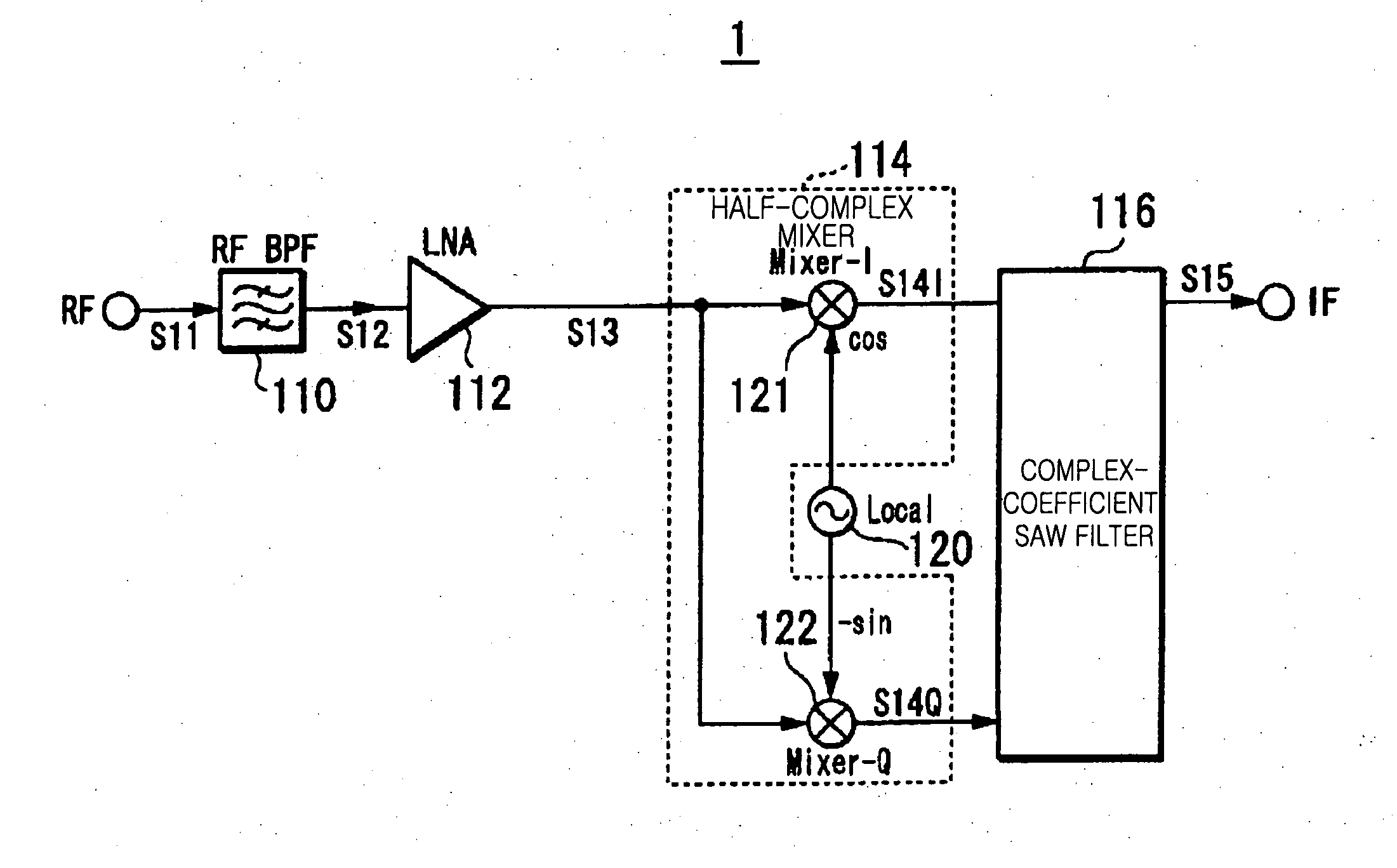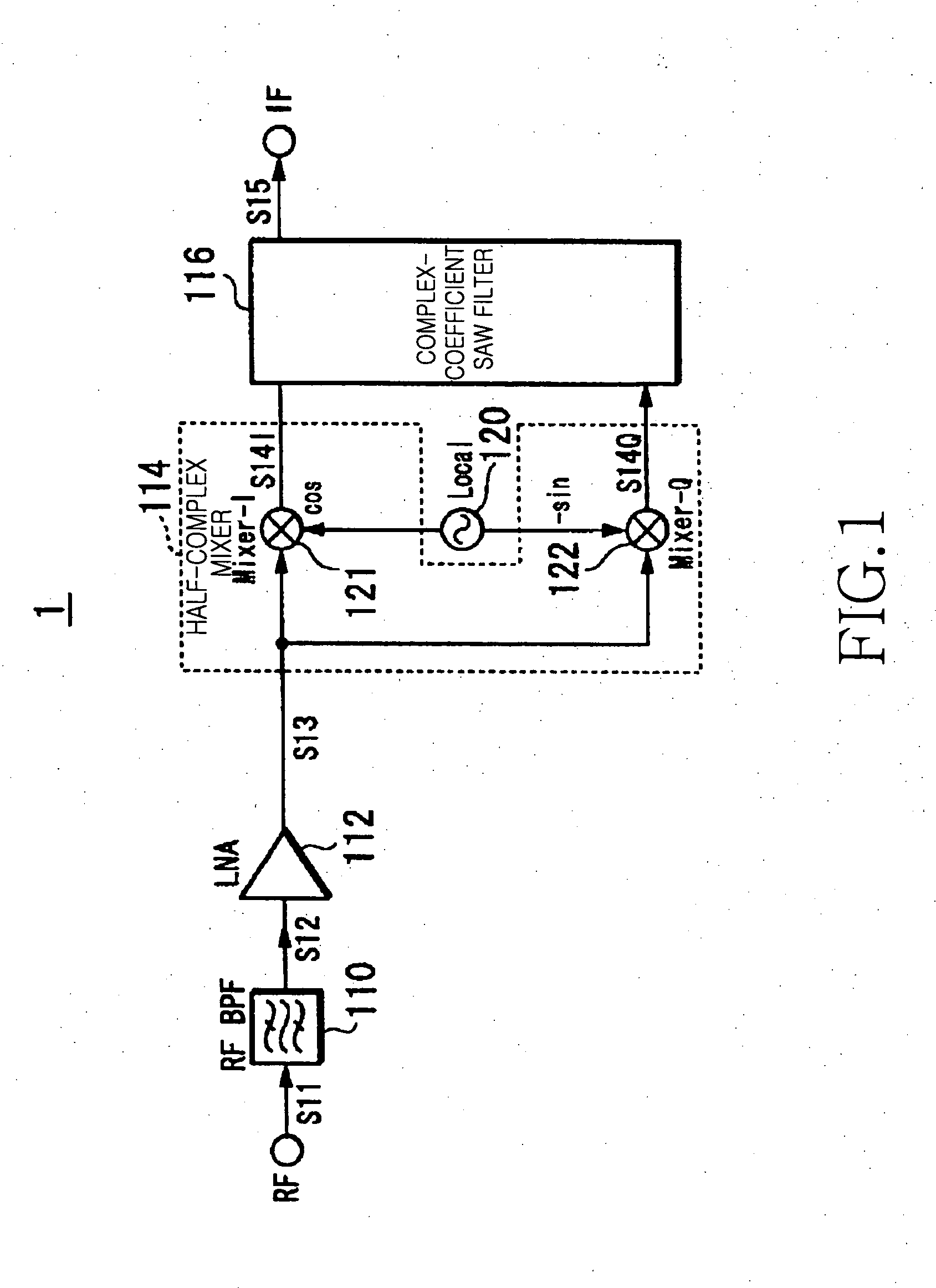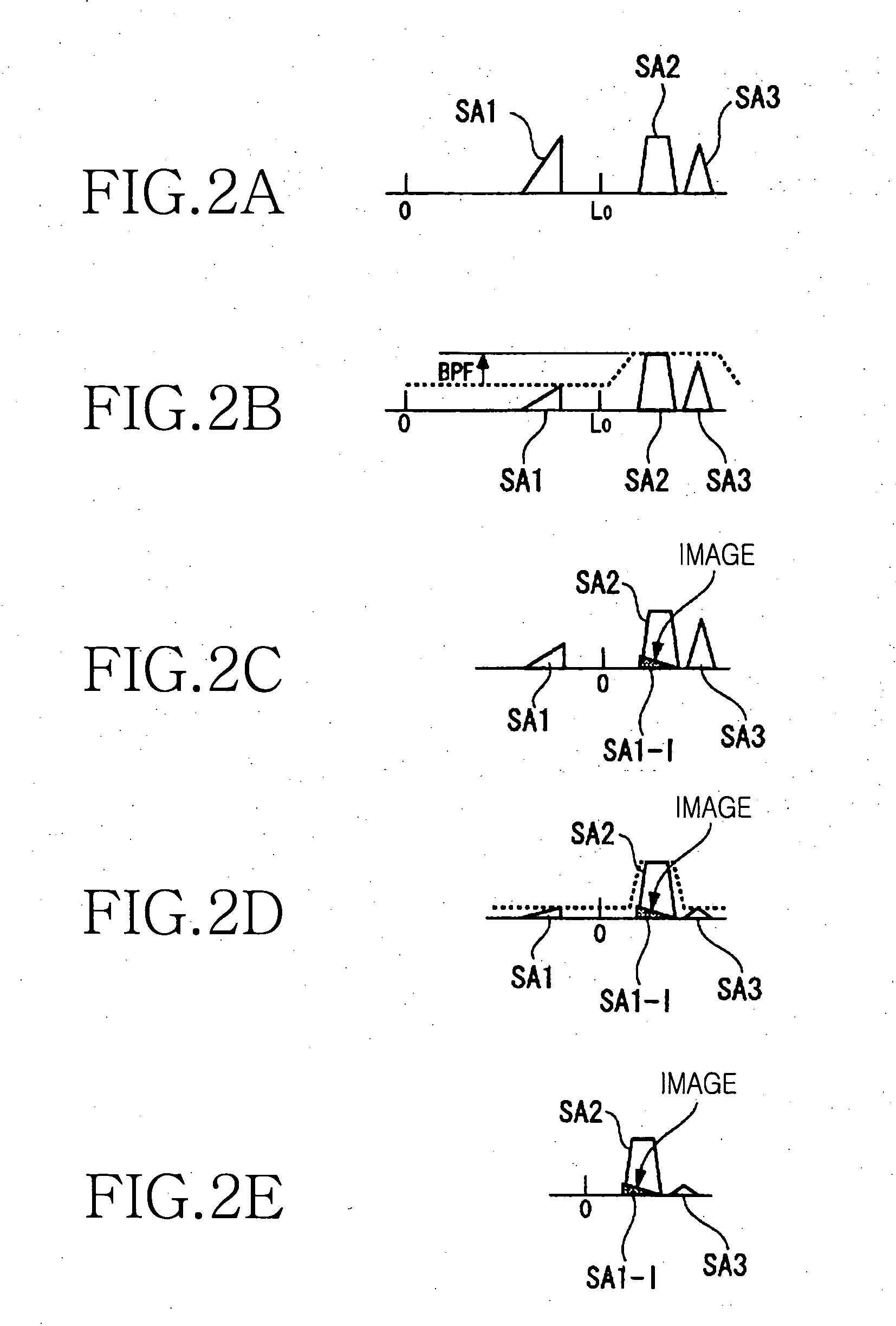Frequency converter
a frequency converter and converter technology, applied in the field of frequency converters, can solve the problems of increasing the cost of components, and increasing the power consumption of the structure afterward, so as to reduce the loss
- Summary
- Abstract
- Description
- Claims
- Application Information
AI Technical Summary
Benefits of technology
Problems solved by technology
Method used
Image
Examples
Embodiment Construction
[0037] A downconverter serving as a frequency converter for frequency-converting a radio frequency (RF) signal to an intermediate frequency (IF) signal less than a frequency of the RF signal and an upconverter serving as a frequency converter for frequency-converting an IF signal to an RF signal greater than a frequency of the IF signal in accordance with the present invention will be described in detail herein below with reference to the accompanying drawings. In the following description, detailed descriptions of functions and configurations incorporated herein that are well known to those skilled in the art are omitted for clarity and conciseness.
[0038]FIG. 1 is a block diagram illustrating a downconverter 1 in accordance with the present invention. The downconverter 1 is provided with a band path (or pass) filter (BPF) 110, a low noise amplifier (LNA) 112, a local oscillator 120, a half-complex mixer 114, and a complex-coefficient surface acoustic wave (SAW) filter 116. The dow...
PUM
 Login to View More
Login to View More Abstract
Description
Claims
Application Information
 Login to View More
Login to View More - R&D
- Intellectual Property
- Life Sciences
- Materials
- Tech Scout
- Unparalleled Data Quality
- Higher Quality Content
- 60% Fewer Hallucinations
Browse by: Latest US Patents, China's latest patents, Technical Efficacy Thesaurus, Application Domain, Technology Topic, Popular Technical Reports.
© 2025 PatSnap. All rights reserved.Legal|Privacy policy|Modern Slavery Act Transparency Statement|Sitemap|About US| Contact US: help@patsnap.com



